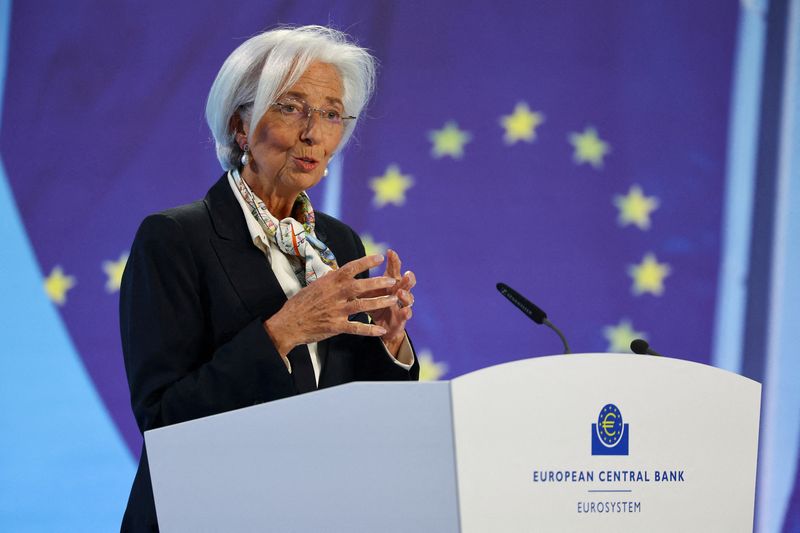
©Reuters. European Central Bank (ECB) President Christine Lagarde speaks during a news conference at the end of the Governing Council’s monetary policy meeting at the ECB headquarters in Frankfurt, Germany, March 7, 2024. REUTERS/Kai Pfaffenbach/File Photo
By Balazs Koranyi and Francesco Canepa
FRANKFURT (Reuters) – The European Central Bank cannot commit to a set number of interest rate cuts even after it starts reducing borrowing costs as the pace of cuts will depend on incoming data, the ECB president said on Wednesday Christine Lagarde.
Many ECB policymakers have expressed support for an initial reduction in funding costs from current record highs, most likely in June, with the debate now focusing on how many more cuts will follow.
On Wednesday, however, Lagarde appeared to try to dampen such speculation, even as she acknowledged that incoming data on wages and inflation had been encouraging.
“Our decisions will have to remain dependent on data and from one meeting to the next, responding to new information as it arrives,” Lagarde said. “This implies that, even after the first rate cut, we cannot pre-commit to a particular rate path,” he said at a conference in Frankfurt.
Echoing Lagarde, ECB chief economist Philip Lane said he and his colleagues will “calibrate for a long time” the appropriate level of rates.
Inflation in the euro zone fell from a double-digit percentage increase in the fall of 2022 to 2.6% last month.
And Lagarde hinted that this decline is likely to be “longer-lasting and less tied to commodity price assumptions” than in the past due to an expected decline in underlying inflation, which excludes food and energy price volatility.
STAGNATION
On the other hand, eurozone economic growth is stagnant and Spanish central bank governor Pablo Hernandez de Cos said that although there is evidence that ECB rate hikes are having a larger impact than expected.
“We will closely monitor the materialization of such risks and reduce the degree of monetary tightening accordingly,” de Cos said at the same event.
But Lagarde explained the conditions necessary for the ECB to start cutting rates: slowing wage growth, a continued decline in inflation and new internal projections confirming that price growth is returning to its 2% target.
“If this data reveals a sufficient degree of alignment between the path of underlying inflation and our projections, and assuming transmission remains strong, we will be able to move to the dial back phase of our policy cycle and ease policy “Lagarde said. .
The ECB will hold policy meetings on 11 April, 6 June, 18 July, 12 September, 17 October and 12 December.
Some ECB governors, including Martins Kazaks of Latvia and Klaas Knot of the Netherlands, have highlighted the advantage of acting when new forecasts are published, i.e. in June, September and December.
By contrast, Greek central bank governor Yannis Stournaras said two cuts before the ECB’s summer break in August seemed reasonable, followed by two more by the end of the year.
Frederik Ducrozet, head of macroeconomic research at Pictet Wealth Management, said Lagarde’s comments on Wednesday would form the basis for reaching consensus among politicians.
“We expect the ECB to cut rates in June, take a break in July (although doves may push harder) and resume cuts at every meeting since September,” he said on Twitter.
(Writing by Francesco Canepa; Editing by Sharon Singleton and Toby Chopra)